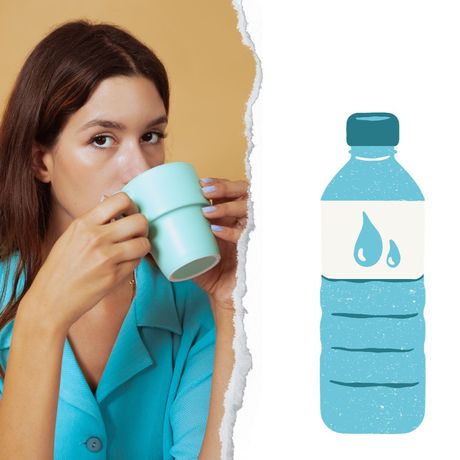Water – the elixir of life, the hydrating hero we've been told to worship since childhood. Yet, amidst the countless sips and gulps, myths about hydration have bubbled up like a persistent underground spring. In this exploration of water wisdom, I shall debunk five hydration myths that might have you reaching for the wrong kind of bottle.

Myth 1: Eight Glasses a Day Keeps Dehydration Away
The infamous "8x8" rule, encouraging eight glasses of water a day, has been engrained in our hydration psyche. But here's the truth: there's no one-size-fits-all water prescription. The National Academies of Sciences, Engineering, and Medicine suggest a daily intake of about 3.7 liters for men and 2.7 liters for women, encompassing all beverages and food sources of water. So, ditch the rigid eight-glass count and drink according to your body's unique needs.
Fact : 📚 According to a 2019 study by the National Academies, individual hydration needs vary based on factors like age, weight, and physical activity.
Myth 2: If You're Thirsty, You're Already Dehydrated
Thirst is your body's intelligent way of signaling that it's time for a refill, not an emergency siren blaring the arrival of dehydration. The human body has a finely tuned thirst mechanism that prompts us to drink when needed. Trust your instincts; quenching your thirst promptly ensures your hydration status remains in the Goldilocks zone – not too much, not too little.
Fact: 🚰 Your body is about 60% water, and maintaining this balance is crucial for overall health and well-being.
Myth 3: More Water Means Better Health
While staying hydrated is crucial, the notion that "more is always better" doesn't hold water. Overhydration, a condition known as hyponatremia, can be just as harmful as dehydration. This electrolyte imbalance occurs when you drink more water than your kidneys can excrete, diluting the sodium in your body. It's a delicate dance – find the balance, and let your body guide the rhythm.
Fact: ⚖️ The balance between water intake and excretion is vital for maintaining electrolyte balance, especially sodium.
Myth 4: All Fluids Are Created Equal
Not all liquids are hydration heroes. Caffeinated and alcoholic beverages, while they contribute to your fluid intake, can have diuretic effects, potentially increasing urine production. Choose water as your main hydration source, and consider hydrating foods like watermelon and cucumber. Herbal teas and infused water can also be delightful alternatives.
Fact: 🍉 Some fruits, like watermelon, have high water content and contribute to overall hydration.
Myth 5: Clear Urine Means You're Hydrated
Clear urine isn't always a sign of optimal hydration; it could mean you're overhydrated. The color of your urine can vary based on factors like diet and certain medications. Aim for a pale yellow color, which indicates a healthy balance of hydration. Dark yellow or amber hues may signal dehydration, prompting you to reach for that water bottle.
Fact: 🌈 The color of your urine is influenced by pigments from the breakdown of red blood cells and the food you eat. It's a visual indicator of your hydration status.
Debunking these hydration myths is the first step toward achieving hydration harmony. Listen to your body's cues, stay mindful of your unique needs, and sip your way to a healthier you. Water wisdom isn't about rigid rules but about understanding the dynamic dance between your body and its liquid ally. So, here's to debunking myths, embracing truths, and raising a glass – the right way. 🥂
Remember, the key to water wisdom is not just in the quantity of water consumed but in the mindful, balanced integration of hydration into your daily life. Stay thirsty for knowledge, not dehydration! 💦



You must be logged in to post a comment.